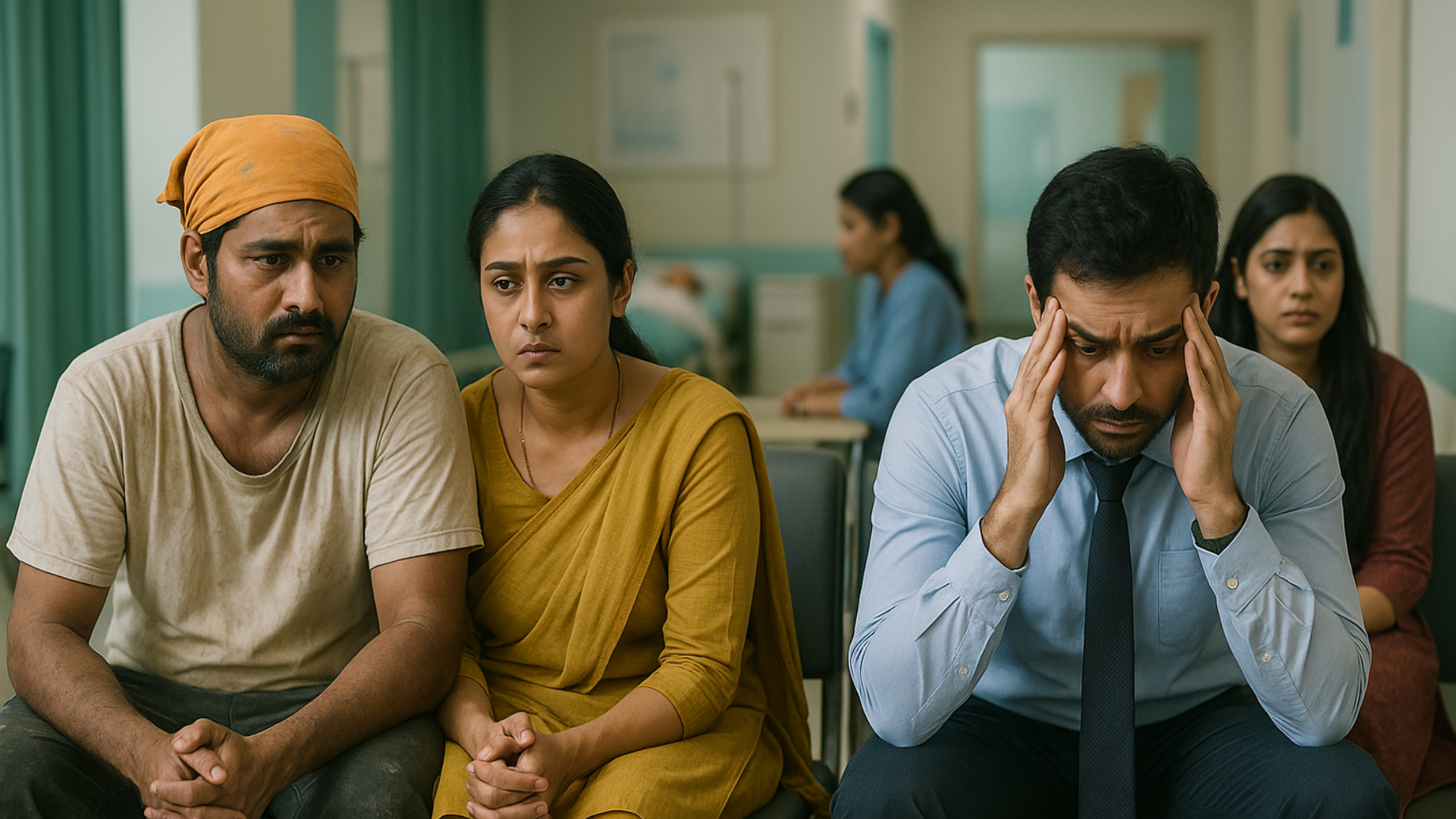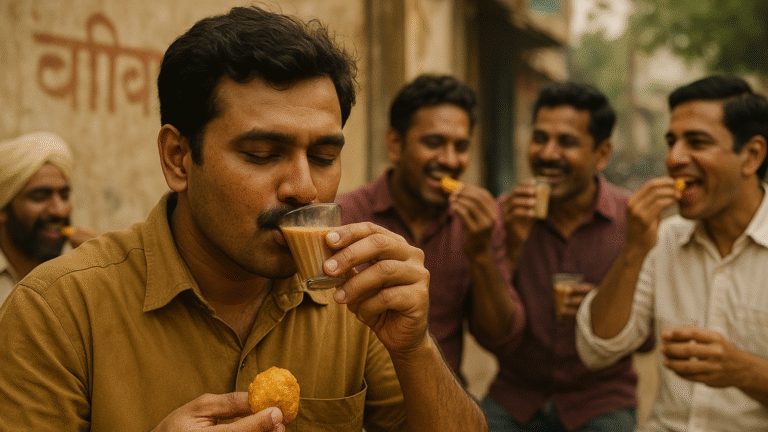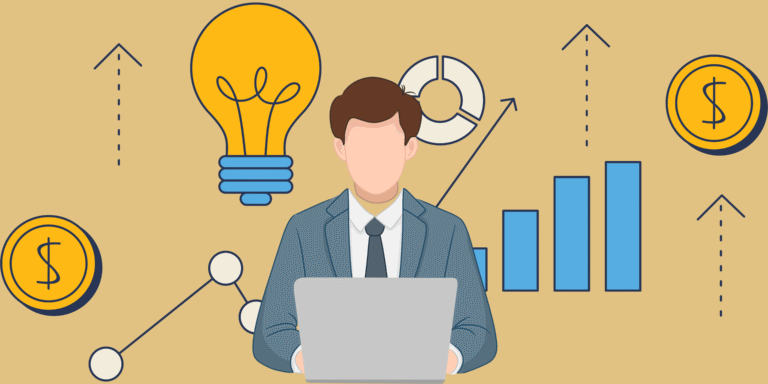Health Crisis? This Emergency Plan Works for Both Labourers and Salaried People

One Emergency. Two Incomes. Same Pain.
Let’s stop pretending money alone protects us. Whether you earn ₹300 a day as a labourer or ₹50,000 a month in a job, health emergencies and sudden expenses can shake you to the core financially and emotionally.
In India today, one sudden illness can destroy a poor family’s kitchen and a salaried person’s credit score. Both are trapped. The only difference is how long it takes for the pain to show.
The Labourer’s Pain: “If I Don’t Work Today, We Don’t Eat Tonight.”
Meet the man who builds our cities. He earns ₹350–₹450 a day. His rent is ₹1,000. Food costs ₹120 daily for a family of four. There are no savings. No backup. Just survival.
Now, imagine he falls sick.
- No work means no income.
- Still needs ₹50 for a clinic visit, ₹20–₹30 for tablets, ₹20 for ORS.
What happens? He might skip medicine, or borrow at 10% daily interest, or use up the tiny ₹300 saved in a jar. Then, the very next day, someone else in the family falls sick. Now what?
This isn’t “poor planning.” This is how real poverty traps work.
The Salaried Professional’s Trap: “I Thought Insurance Was Enough. I Was Wrong.”
Now, meet someone earning ₹50,000 a month. Sounds comfortable, right? Until:
- Emergency tests: ₹1,500
- Doctor’s consultation: ₹2,000
- Medicine: ₹3,000
- Hospital shortfall (not fully covered by insurance): ₹5,000
- Office leave leading to a salary cut.
Your insurance doesn’t cover everything. Your UPI balance is gone. EMIs are due. The credit card is swiped again. And just like that the middle-class debt spiral begins.
You keep working. But you never truly recover financially. You don’t rise. You just pay and pay.
The Common Problem: No Safety Net for Health
Both scenarios, despite the vast difference in income, boil down to the same core issue:
- No dedicated emergency health plan.
- No safe, protected fund that’s truly for emergencies.
- No clear fallback when crisis hits.
- Emotional money decisions that lead to more debt.
- Lack of awareness (or trust) in available government schemes.
Your Real 3-Step Fix: Building a “Health Shield” for Anyone
No empty slogans. No unrealistic “just save ₹25 a day” advice. This is about building structure and protection that works for everyone, from any income level. It’s about creating a safety net that genuinely holds you up.
1. Ayushman Bharat (PMJAY) : The Free Lifeline for the Poor
This is a powerful government scheme that many eligible families in India still don’t use. If you know someone struggling, this could be their biggest help.
- Who it’s for: Labourers, domestic workers, street vendors, migrants, and many other low-income families.
- What it gives: Free hospital care up to ₹5 lakh per year, covering major surgeries, hospital stays, and emergency treatment.
- Where to apply: Your nearest Common Service Centre (CSC). You’ll need your Aadhaar card and Ration card.
- Activation: Usually within 5–15 days.
Why it matters: This scheme can literally save a life without breaking the bank. Be the person who tells them about it, and even helps them apply if they don’t know how. Your guidance can be life-changing.
2. Low-Cost Government Insurance + Smart Private Coverage: Your Basic Armor
While Ayushman Bharat is incredible, everyone needs additional layers of protection.
For Labourers:
- PM Jeevan Jyoti Bima Yojana (PMJJBY): Life insurance for just ₹330 per year. Provides financial support to the family if the earning member passes away.
- PM Suraksha Bima Yojana (PMSBY): Accident cover for a tiny ₹12 per year. Offers support in case of accidental death or disability.
These are available at most banks and post offices. Even if small, they provide dignity and crucial support in the worst-case scenarios.
For Salaried Professionals:
- Get a proper family floater health plan (₹3L–₹5L cover). But don’t just buy it; understand it thoroughly.
- Consider adding an OPD (Outpatient Department) or critical illness rider if your budget allows.
- Know what’s excluded: Understand the fine print – things like ambulance charges, specific room types, or waiting periods for pre-existing conditions.
- Store everything in one digital emergency folder: Policy soft copies, hospital contacts, and terms. No more frantic searches when panic sets in!
3. A Real Emergency Health Fund (Not a Jar, Not a Joke)
We’re not just saying “save ₹25 a day.” That advice often isn’t practical. We’re saying: Build an emergency tool that stays protected and dedicated to health.
For Labourers:
- Open a separate zero-balance savings account at any bank. This keeps the money safe from daily temptations and unexpected demands.
- Hide the passbook, and give the ATM card to a trusted spouse or friend (not yourself daily). This creates a small, essential barrier against impulsive spending.
- Save ₹10–₹20 only when you make extra, like a bonus on a good day or during a festival. This isn’t for daily food or rent; it’s your medical oxygen.
- You won’t touch it easily. That’s the whole point. Even ₹500 saved over three months can cover a life-saving fever treatment.
For Salaried Professionals:
- Auto-debit ₹500–₹1,000 per month (or more!) from your salary account to a completely separate bank account.
- Do NOT link this second account to UPI.
- Do NOT get a debit card for this account. Make it slightly inconvenient to access.
- Label it: “Only for Emergency Health.”
- This dedicated fund is the only thing that stops you from piling on credit card debt, missing EMIs, and spiraling into panic during a health crisis. It’s your crucial buffer.
What YOU Can Do (Today)
You, reading this, might be a student, a young professional, a housewife, a parent, or a friend of a labourer.
But you have knowledge now.
So, ask yourself:
- Does your house help, driver, maid, or a worker you know have an Ayushman Card?
- Does your friend earning ₹50,000 have a dedicated health fund or a truly understood insurance policy?
- Can you guide one person? Tell one family about these simple, real solutions?
That’s true impact.
Final Words: The Wall You Build Now Protects Generations
“When you’re poor, you borrow. When you’re middle-class, you borrow smarter. But both fall when health breaks the door.”
Finance isn’t just about investment and wealth. Finance is safety. Protection. Peace of mind.
You don’t necessarily need more money. You need a better system to protect the money you have. And you can start building that system today.





